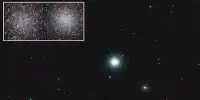A new mechanism for Saturn to get aurorae, the light shows caused by charged particles slamming into a planet’s atmosphere, has been discovered by astronomers. This phenomena is caused by high-altitude winds swirling around the planet, and it is not entirely due to magnetic interactions as it is on Earth. This phenomenon was initially reported in a study published in Geophysical Research Letters. It also sheds light on a long-standing riddle surrounding the ringed planet: the duration of its day.
Magnetic fields are commonly used to measure planetary rotation. There will be pulses of radio waves that can be used to track if a planet’s magnetic field and rotation axis are not aligned. Unfortunately, Saturn’s alignment is very good, thus the procedure required a lot of precision. These radio pulses appeared to vary over the decades, seasons, and hemispheres of the planet, much to the amazement of the scientists. Because the planet’s spin can’t fluctuate so much on such a short time scale, something else must be going on to explain the strange radio pulses. And scientists are certain it’s the strong winds and freshly discovered aurorae.
“This research marks the first detection of the fundamental driver, which is located in the planet’s upper atmosphere and is responsible for both the observed planetary periodicities and aurorae.” “Ph.D. researcher Nahid Chowdhury, a member of the University of Leicester’s Planetary Science Group, said in a statement. “It’s an incredible feeling to be able to deliver an answer to one of our field’s most vexing concerns. This is likely to prompt some reconsideration of how local atmospheric weather effects on a planet influence the formation of aurorae, not just in our own solar system but also in other parts of the galaxy.”
The Near-Infrared Spectrograph at the Keck Observatory was utilized by the worldwide team to track the flow of Saturn’s ionosphere. They measured the speed of the winds in this part of Saturn’s atmosphere, which range from 0.3 to 3 kilometers per second (670 to 6700 miles per hour). The energy from a deeper layer, the thermosphere, propels these strong winds. The magnetic field lines are affected by these powerful flows, resulting in aurorae. “By firmly pinpointing the origin of the enigmatic variability in radio pulses, our analysis clears up much of the ambiguity surrounding Saturn’s bulk rotation rate and the duration of the day on Saturn,” said Kevin Baines, a Cassini Science Team member located at JPL-Caltech.
Saturn’s rotation rate was calculated in 2019, and it had to rely on sources other than radio pulses. Scientists discovered the periodicity using data from the Cassini spacecraft, which looked at gravity-induced disruption in Saturn’s rings. They confirmed that a day on Saturn is 10 hours, 33 minutes, and 38 seconds long.















